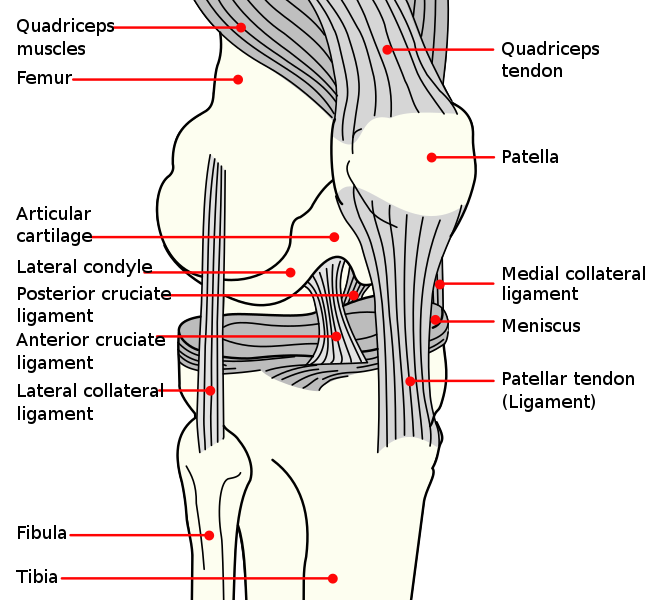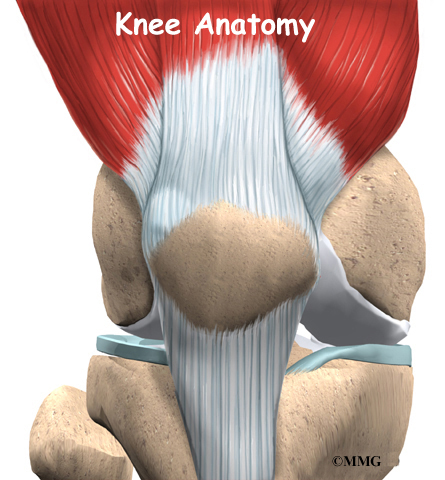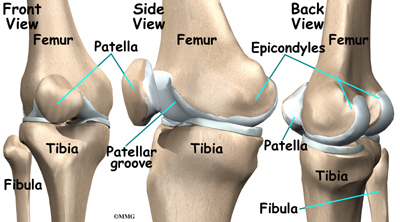"Summer parkour jam
https://fb.me/e/4xLSvV4Bd"
Train Hard - Stay Humble
I was looking forward to my first blog post being something REALLY inspirational, or retrospective, or biographical, but I guess -as ironical as it is, given my screen name- it's going to be about a minor, yet bothering injury; and about it's assessment, treatment and prevention...
---------------------------------------------------------------------------------------------------------
A recent blow to my left knee, which also caused a short, deep cut (treated with three stitches and completely healed by now), has left me with an annoying pain when putting stress on the left leg and knee itself.
The stitches bothered me only in the first 24 hours, in which it was recommended not to bend the knee to avoid pulling on them. Holding the leg stiff, while icing it, seemed to take care of the "hit-to-the-knee" part of the problem, also because the area didn't present any swelling ... that, eventually, appeared not to be true...
After 5 days rest (enough time to heal the cut) a minimal physical test proved the following: while I could jog on the balls of my feet with minimal distress, lift energetically my knee to my chest (thus bending it way more than 90degrees), and gently squat (heels down) almost to my highest flexing point, I couldn't walk down a stair without pain, cat-balance on a wide, otherwise manageable rail, and jumping with both feet down from so low as 3' high was absolutely terrifying!
The blow suffered has induced a condition called "Patellofemoral stress syndrome" (or "Anterior knee pain syndrome"), a pre-condition to a worse disorder called "Chondromalacia Patellae".
Symptoms (my specific matched with generic): pain on the front of the knee exacerbated by negotiating steps, especially descending stairs, squatting maneuvers, kneeling, and prolonged sitting. The pain associated with Chondromalacia is often dull and aching in quality, but occasionally may be sudden and sharp. The pain is often worsened by activities that require bending the knee for a prolonged period or with increased load (i.e. stairs or squatting). Pain may be associated with a grating or popping sensation of the knee. The grinding or popping may not actually cause pain but is noticed by the patient as abnormal and thus may cause patient distress. Another distressing symptom is the sudden giving way of the knee while flexing. This giving way is not due knee ligament insufficiency, but due to pain associated with movement that causes the muscle to suddenly stop contracting as a reflex to that pain.
Causes: "Chondromalacia is an irritation of the undersurface of the kneecap. The undersurface of the kneecap, or patella, is covered with a layer of smooth cartilage. This cartilage normally glides effortlessly across the knee during bending of the joint. However, in some cases, the kneecap tends to rub against one side of the knee joint, and the cartilage surface become irritated, and knee pain is the result". That 'irritation' can be caused by genetics (poor alignment), extraordinary wear (i.e. in runners) or may be due to a sudden overload (i.e. due to a blow, or trauma). "The damage may range from a slightly abnormal surface of the cartilage to a surface that has been worn away to the bone. Severe Chondromalacia related to injury occurs when a blow to the knee cap tears off either a small piece of cartilage or a large fragment containing a piece of bone..."
Related facts: "The force burdened by the patella is about two times body weight when climbing up stairs, and seven times body weight when descending. This increased burden on the kneecap when going down stairs causes a magnification of pain during that activity". (Imagine landing any drop!)
Treatment: "The treatment of Chondromalacia is primarily non-surgical with emphasis on strengthening the quadriceps within a painfree arc of motion. Proper technique of performing the exercises must be adopted. The use of ice and anti-inflammatory medication is beneficial to initially decrease the pain associated with this condition. Avoidance of activities that place excessive load across the patellofemoral joint is also important. This would include minimizing stair climbing/descending and squatting, or kneeling activities until quadriceps strength is restored and the inflammatory response has subsided. Taping can be used to decrease pain about the patella while exercising. There are also elastic knee braces available which have adjustable pads to help maintain patella alignment. The brace is usually worn for athletic activities".
In conclusion: While the extent of my injury is not yet assessed (fluctuating between pre-condition and condition), I will of course take it easy for a while, trying to adopt this Patellofemoral Exercise Guide, while concentrating my workout on upperbody, and abs, and focusing in getting (at least!) a clean muscle-up!!!
B)
sources:
http://healthlink.mcw.edu/article/926053052.html
http://www.pamf.org/sports/king/condromaliciapatella.html
http://lipscombclinic.com/sports/Articles/Injuries/Chondromalacia/c...
http://www.orthoseek.com/articles/chondromp.html
http://orthopedics.about.com/cs/patelladisorders/a/chondromalacia.htm
---------------------------------------------------------------------------------------------------------
A recent blow to my left knee, which also caused a short, deep cut (treated with three stitches and completely healed by now), has left me with an annoying pain when putting stress on the left leg and knee itself.
The stitches bothered me only in the first 24 hours, in which it was recommended not to bend the knee to avoid pulling on them. Holding the leg stiff, while icing it, seemed to take care of the "hit-to-the-knee" part of the problem, also because the area didn't present any swelling ... that, eventually, appeared not to be true...
After 5 days rest (enough time to heal the cut) a minimal physical test proved the following: while I could jog on the balls of my feet with minimal distress, lift energetically my knee to my chest (thus bending it way more than 90degrees), and gently squat (heels down) almost to my highest flexing point, I couldn't walk down a stair without pain, cat-balance on a wide, otherwise manageable rail, and jumping with both feet down from so low as 3' high was absolutely terrifying!
The blow suffered has induced a condition called "Patellofemoral stress syndrome" (or "Anterior knee pain syndrome"), a pre-condition to a worse disorder called "Chondromalacia Patellae".
Symptoms (my specific matched with generic): pain on the front of the knee exacerbated by negotiating steps, especially descending stairs, squatting maneuvers, kneeling, and prolonged sitting. The pain associated with Chondromalacia is often dull and aching in quality, but occasionally may be sudden and sharp. The pain is often worsened by activities that require bending the knee for a prolonged period or with increased load (i.e. stairs or squatting). Pain may be associated with a grating or popping sensation of the knee. The grinding or popping may not actually cause pain but is noticed by the patient as abnormal and thus may cause patient distress. Another distressing symptom is the sudden giving way of the knee while flexing. This giving way is not due knee ligament insufficiency, but due to pain associated with movement that causes the muscle to suddenly stop contracting as a reflex to that pain.
Causes: "Chondromalacia is an irritation of the undersurface of the kneecap. The undersurface of the kneecap, or patella, is covered with a layer of smooth cartilage. This cartilage normally glides effortlessly across the knee during bending of the joint. However, in some cases, the kneecap tends to rub against one side of the knee joint, and the cartilage surface become irritated, and knee pain is the result". That 'irritation' can be caused by genetics (poor alignment), extraordinary wear (i.e. in runners) or may be due to a sudden overload (i.e. due to a blow, or trauma). "The damage may range from a slightly abnormal surface of the cartilage to a surface that has been worn away to the bone. Severe Chondromalacia related to injury occurs when a blow to the knee cap tears off either a small piece of cartilage or a large fragment containing a piece of bone..."
Related facts: "The force burdened by the patella is about two times body weight when climbing up stairs, and seven times body weight when descending. This increased burden on the kneecap when going down stairs causes a magnification of pain during that activity". (Imagine landing any drop!)
Treatment: "The treatment of Chondromalacia is primarily non-surgical with emphasis on strengthening the quadriceps within a painfree arc of motion. Proper technique of performing the exercises must be adopted. The use of ice and anti-inflammatory medication is beneficial to initially decrease the pain associated with this condition. Avoidance of activities that place excessive load across the patellofemoral joint is also important. This would include minimizing stair climbing/descending and squatting, or kneeling activities until quadriceps strength is restored and the inflammatory response has subsided. Taping can be used to decrease pain about the patella while exercising. There are also elastic knee braces available which have adjustable pads to help maintain patella alignment. The brace is usually worn for athletic activities".
In conclusion: While the extent of my injury is not yet assessed (fluctuating between pre-condition and condition), I will of course take it easy for a while, trying to adopt this Patellofemoral Exercise Guide, while concentrating my workout on upperbody, and abs, and focusing in getting (at least!) a clean muscle-up!!!
B)
sources:
http://healthlink.mcw.edu/article/926053052.html
http://www.pamf.org/sports/king/condromaliciapatella.html
http://lipscombclinic.com/sports/Articles/Injuries/Chondromalacia/c...
http://www.orthoseek.com/articles/chondromp.html
http://orthopedics.about.com/cs/patelladisorders/a/chondromalacia.htm
Views: 1206
Comment
-
Comment by Fyrel on November 16, 2008 at 1:00am
-
I see what you did there. ;)
Hope you have a fast recovery.
-
Comment by SafeNSure on November 16, 2008 at 12:33am
-
Thanks,
a safe recovery is completely sure!
;)
-
Comment by Kirill on November 16, 2008 at 12:30am
-
:( Im really sorry. I think that a recovery is more than possible.
- ‹ Previous
- 1
- 2
- Next ›
© 2025 Created by SafeNSure.
Powered by
![]()





You need to be a member of Bay Area Parkour to add comments!
Join Bay Area Parkour